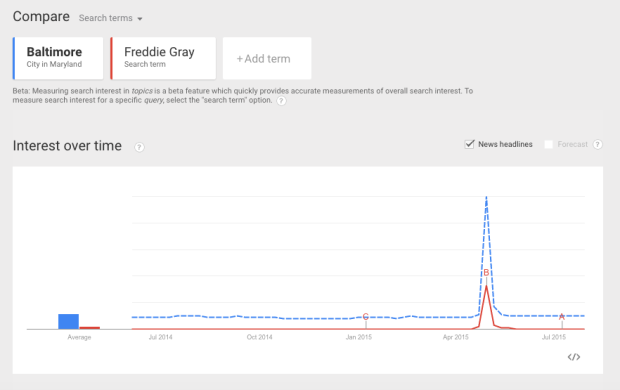The recent new stories of Sandra Bland, the teenager in McKinney, TX, and Samuel DuBose have yet again ignited national discussions of race, police brutality, and reform. During the Baltimore riots a few months ago in response to the death of Freddie Gray, I had jotted down some thoughts and feelings about privilege, power, and systemic injustices but never posted it. Then time passed, and it didn’t seem as current or relevant to be posting about Baltimore. We had Charleston, South Carolina and other cities to worry about. Without meaning to, I fell subject to the same pressures and cycles of the popular media. As is sadly commonplace these days, the round-the-clock on-the-ground coverage of Baltimore’s plight is gone, and the media furor passed quickly to the next big topic; Baltimore’s saga has since garnered scarcely more than a mention.
I therefore take this time to reflect on how far (or not) we have come since the Spring. The officers involved in this incident may have been indicted, but this does not close the chapter on Baltimore’s struggles and anguish. It bears revisiting. Not just for those in Baltimore, but for those in Charleston, SC and now Cincinnati, OH wrestling with the same injustices.
One of my more memorable public health professors drove home the idea for me that communities are living groups of people with particular strengths and assets. Whereas most concerned public health and medical groups might arrive and perform a “needs assessment” and consider their work complete, this approach immediately labels one as an intervening but ultimately un-invested outsider. “I’m so-and-so, and I’m here to find your problems and tell you what you’re doing wrong.”
It’s how many public reactions to Baltimore proceeded – this was a city with untoward levels of violence, destitution, chronic diseases, crime, and un-education. Your behavior is wrong. That condition should change. This isn’t the right way to go about this. It’s no wonder they burned their own buildings and destroyed their own property. They did only what they knew and/or were prone to do.
But what purpose did that serve besides armchair politicking and highlighting how White America just doesn’t get it? How much concrete action to address the underlying causes has resulted from it? As Nate Silver and his colleagues at FiveThirtyEight blog have pointed out, Black Americans in general are killed at 12 times the rate of people in other developed countries, and the rate of homicides and nonfatal shootings in Baltimore since the Freddie Gray incident have spiked. Have we done anything to address this, locally or nationwide? Recent history tells us not (see NYTimes interactive).
I would like to present a different image of Baltimore and the riots. An image of a protective mother afraid for her child’s life. An image of diverse communities banding together in protest, both violent and non-violent. An image of a group of people standing up for a change they believe in.
I don’t begin to assume that I know everything these individuals have lived and experienced, but I can certainly empathize with their frustration against a system that works against them. Sometimes it takes actions outside of a system to effect change within it.
Sure, the violence was ultimately detrimental to some locally owned and poor-owned businesses and homes, but that didn’t mean that the underlying motivations of the actors weren’t clear or that the tactic of violence itself was unwarranted. If any attention had been paid to these communities and the systems that perpetuate these inequalities beforehand, then I would have agreed that violence may not have been the right course of action. However, the fact that very little support has been – and continues to be – afforded to these communities makes that argument irrelevant. It doesn’t matter whether or not the violence was justified, or whether or not the individuals were acting with a consciously unified agenda. The violence was a last-ditch effort to rattle a system that had its foot on the neck of the oppressed for too long.
If we support this sort of protest against systems of injustice in our films and novels, why don’t we support them now?
Perhaps the lesson that we can take from this – and from any community that we as outsiders try to “help” – is that to effect real change in the system, we need to get those voices from the community into seats of power. Positions and organizations that can actually help communities and make positive improvements. Steps that promote a community’s strengths and assets, not just highlight their flaws.
As someone who has a platform for expression, I can at least use my voice to amplify others’.
Make the world’s troubles your own.

Extremely well written and poignant. I wasn’t aware that Baltimore was still having so much strife, but i don’t know why I’d think otherwise. oh, yeah because our media covers the hell out of a story and then drops it like it’s hot. Exactly what they did when G.H.W. Bush took us into Iraq. At first it was 24/7 action. People think war is entertainment? ?? sickening. Then all of a sudden it was like you could hear a pin drop. Literally. The war become unpopular and Fox, CNN, and all the usual players backed completely off. It’s maddening. I’m ready fo radical change. Besides Baltimore, in so many other places gun violence has basically like quadrupled 50 times (rough estimate and over exaggeration) but c’mon America!
Green Goddess
LikeLiked by 1 person